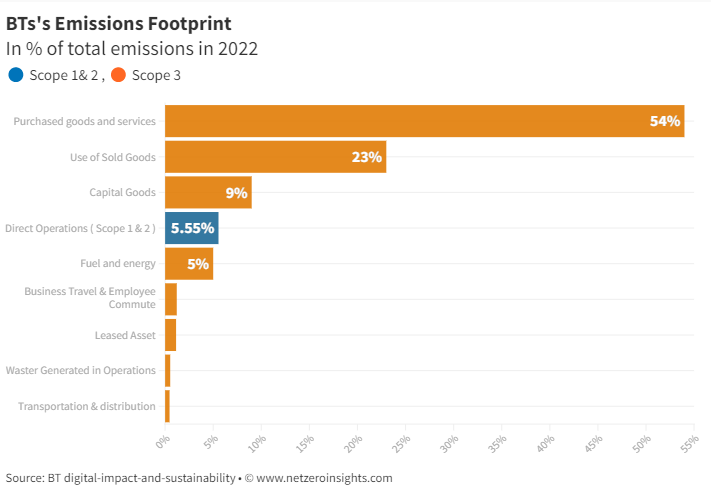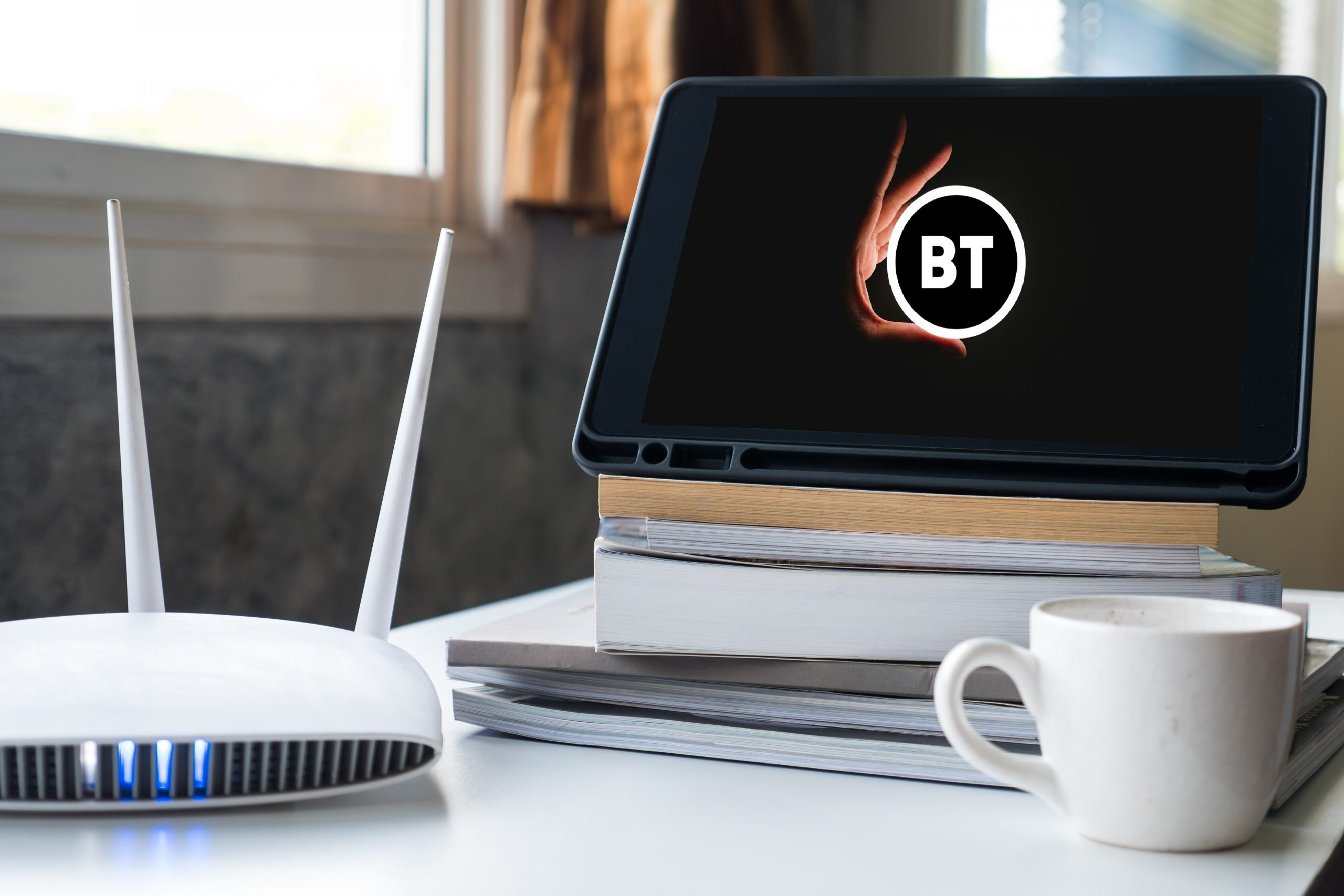The telecom and tech industry accounts for 3-4 % of all CO2 emissions. On the one hand, there is an exponential rise in data consumption. Conversely, the telecom industry is also transitioning to Fibre and 5G in fixed and mobile networks.
BT consumes 1.5% of the UK grid’s electricity.
The major challenge for the industry is to
- Break the link between infrastructure/equipment usage and the rise in data consumption
- Develop and manufacture power-efficient, high-quality and long-lasting telecom equipment
It’s also well established that Fibre needs less energy when compared to traditional cables and copper technologies, and 5G equipment is more energy-efficient than its 4G counterparts.
BT would be able to recover and recycle 200K tonnes of copper over the next ten years while transitioning to Fibre
BT has broadly divided its climate strategy into 5 areas.
- Net-zero in operations and supply chain
- Helping customers to reduce their footprint
- Reporting and Transparency e.g TCFD
- Leading the public debate
- Promoting a circular economy
1. Net-zero in operations and supply chain
When we look at BT’s emissions majority of its emission come from its supply chain, with over 71% from the upstream supply chain. They have pledged to become net zero in their operations by 2030 and their supply chain by 2040.
- Using Supply chain Purchasing Power & Climate contracts
– For all new contracts worth over £25m, BT has introduced a requirement for suppliers to have a net-zero science-based target or commit to having one within six months.
– This helps move the conversation from sustainability to executive and contractual discussion.
– 15% of selection criteria are linked to environmental and human rights performance.
- CPO email, survey, and follow up
The chief procurement officer wrote to all the suppliers asking them to switch to 100% renewable electricity, set net-zero targets and engage their suppliers via a survey with three simple questions.
Using this survey, they asked 405 suppliers to join BT in reporting climate-related data to CDP, and 77% responded. Of these, 59% report operational carbon emissions, 76% set future carbon reduction targets, and 73% engage with their own suppliers on climate.
- Supplier CDP Disclosure
– Ask the supplier to disclose CDP, a depository for companies to disclose their carbon activity.
- Transitioning to a low-carbon fleet
BT has the second-largest fleet after Royal Mail in the UK with around 33,000 vehicles which cover on Average 400 million km in visits /travels by BT engineers.
BT has reduced 10% of emissions by optimising routes/minimising visits to solve a problem using AI and algorithms.
The major challenge faced in transitioning into EV is because most of the heavy goods, specialist vehicles and cranes required by BT do not exist yet. They have joined forces with the Climate group to form UK Electric Fleet Coalition, which is essential in raising voices to policymakers to change policy to enable this transition.

2. Helping customers to reduce their footprint.
Around 24% of BT’s emissions are from Customers using their products. BT is working on a Green-tech innovation platform aka Green TIP. Green TIP aims to uncover breakthrough tech partnerships, which can help its customers reduce their emissions. Example: smart streets, smart buildings and remote diagnostics.
BT has partnered with Plug and Play(PNP) to run its open innovation program. Plug and Play is a silicon valley based organisation, which on the one hand, does scouting and researches startups across the globe and on the other hand work with corporates to match them to these startups.
BT creates a brief of the potential problems they are looking to solve through plug and play, then screens startups to select a partner to work for a proof of concept. With the successful completion of the proof of concept, they would further scale the solution.
3. Reporting and Transparency
Without getting into much detail it is worth mentioning that BT uses a range of external frameworks and standards: – Global Reporting Initiative: Core option – UN Global Goals – ISO 26000 standard – Climate Disclosure Standards Board framework – Sustainability Accounting Standards Board (SASB) – Task Force on Climate-related Financial Disclosures (TCFD) – UN Global Compact.
4. Leading Public Debate:
BT joined exponential roadmap initiatives along with IKEA, Unilever, Telia, Ericsson and others to 1.5 supply chain leaders aiming to drive climate action throughout the global supply chain and has been joined by other big brands like Nestle, Microsoft and MasterCard since then.
BT has also launched an SME climate hub targeted at smaller businesses to provide necessary help to set net-zero targets. To help small businesses across the UK set net-zero targets, they encourage companies to sign up for the SME climate commitment. This is supported by the Government’s UK Business Climate Hub, an initiative designed to provide guidance on how small businesses can set net-zero targets, measure their emissions and develop climate strategies.
5. Promoting a circular economy.
Over 200K old mobiles were traded in for newer ones. Every customer can also return and recycle our BT setup boxes, and hubs for free. By refurbishing these kits, BT was able to prevent 170 tonnes of electrical waste from going to landfills. (Equivalent to 14 double-decker buses.)




Really insightful article!